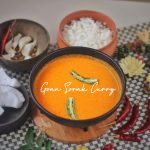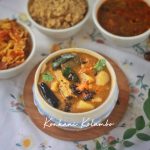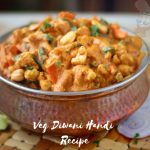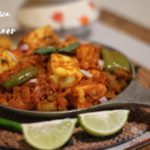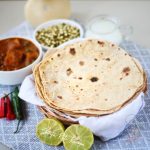Relish this Goan festive delight Khatkhate a protein rich dish, and divulge into the well of nutrition and replenish yourself in one sumptuous meal.. Get a native touch of Konkan by making this recipe in earthen clay pot and relive the moments of nostalgia with your Aiye.
Table Of Contents:
1. Khatkhate
2. An Insight Into Konkan Vegetarian Food
3. Some Common Konkani Staples
4. Khatkhate: A Note
5. Simplicity- A Life With Nature
6. Ingredients Needed To Make Khatkhate
7. Step wise Directions To Make Khatkhate
8. Nutritional Value
9. Make Ahead Tips
10. Faqs
11. Khatkhate Is The Best Meal
12. Dishes That Synchronize With Katkhate
13. Trivial Plans For A Typical Konkani Thali
Khatkhate also fondly called as khatkhatem, is a typical Konkan dish, a grand vegetarian fare made of more than twenty seasonal vegetables during festivals and special occasions. The end of the monsoon is celebrated with this seasonal vegetables by making dishes like khatkhate where gardens bloom with colorful flowers and fresh vegetables and ripe fruits in every Konkan household.
An Insight Into Konkan Vegetarian Food:
As Konkani cuisine identifies itself predominantly with sea food, meat, chicken and other stuff certainly we cannot rule out its vegetarian gastronomy. It is equally awesome with stunning starters, innumerable curries, luscious gravies, rustic rotis, soothing beverages and decadent desserts. The climate of Konkan region favors the vegetarian cuisine, with its richness of soil and suitable weather that enables the growth of plenty of tubers, gourds, roots, leafy vegetables and fruits. This forms a fantastic base for vegetarian kitchen, where lip-smacking dishes are tried and tested with a play on a staggering number of veggies and an array of spices. With coconut as the primary staple, lots of recipes are made with different combinations and forms that are exemplary and unique of its own kind.
Some Common Konkani Staples:
Apart from regular twine and tubers, certain unique edible stuff like bamboo shoots, kokum, triphala, raw pepper fruit, tender jack fruit, forest plum and pumpkin vine are grown and used in plenty in the day today cooking. Corn and fresh beans are common, while yam, colocasia and sweet potato are in the frequently used list. Pigeon peas, white peas and groundnut are the most chosen lentils and nuts while rice and wheat are the main staples.
Khatkhate: A Note
Khatkhate is rather a fiesta than a dish, much adored for its grandeur and deliciousness. This power packed nutritious curry is made of more than twenty vegetables roughly, where at least a minimum of five is essential. This exotic mixed vegetable stew would match with any main course Konkan dish and it is much fulfilling. With spiced coconut paste as base, this konkan khatkhate would slick up any konkan meal a notch higher.
It is a wholesome food as it has dal, vegetables, spices and coconut which would cater to all nutritional need like protein, vitamins, minerals and carbohydrate. The combination of triphala, jaggery and kokum works wonders in this recipe, which makes it so unique and typically Goan. Especially, as it is a "no onion no garlic" food it becomes the best choice for puja days and ceremonies. Moreover, it is one of the rarest oil free recipes which does not require any tempering at all.
Simplicity- A Life With Nature
It feels so nice to see seasonal vegetables being adored and celebrated in almost all the Indian cuisines, and it just makes us wonder about our ancestors' passion and earnestness towards crops, vegetables, food and fodder. They lived a simple life close to nature, and had a soul nourishing food made of naturally grown millets, crops, pulses, vegetables and fruits. And several dishes were made of seasonal crops and vegetables and specifically prepared for festivals and ceremonies.
Just as an honor to the end of monsoon, this khatkhate is prepared and usually it is the chosen dish for weddings, parties and pujas. Besides being power packed with nutrients, this dish is delicious and satiating as well. It is versatile and goes well with any main course menu and can even be taken as a stew.
Without much ado, lets start preparing this Konkan Khatkhate with all the necessary veggies at hand:
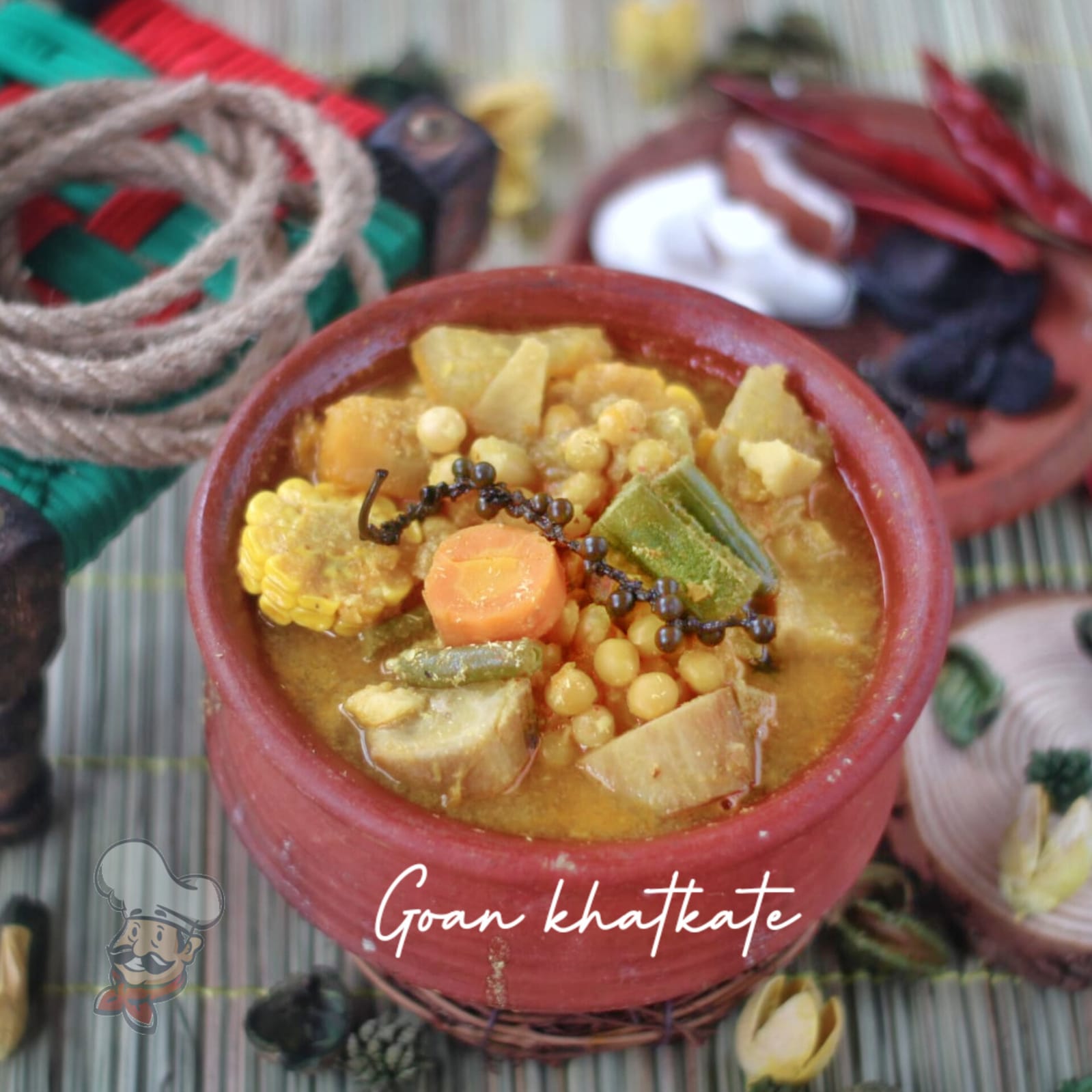
Ingredients Needed To Make Khatkhate:
1. Lentil To Boil - A cup of tuvar dal
2. Vegetables to parboil- drumstick, yam, raw banana, ridge gourd, colocasia, snake gourd, raw papaya, pumpkin cucumber, potato, corn, sweet potato, raw jack fruit, red amaranth stem, pumpkin vine, french beans and carrots.
3. For The Base Paste - grated coconut, dried red chili, coriander seeds and turmeric.
4. Key Ingredients - Triphala fruit, dried kokum and jaggery.
Step Wise Directions To Make Khatkhate:
1. Boil The Tuvar Dal: Boil the tuvar dal and mash it well.
2. Boil The Veggies : Boil water in a broad vessel and drop in the veggies one by one according to its texture and
capacity. See to it that each vegetable is firm and crisp at the end.
3. Make The Paste: Add grated coconut, red chilies, coriander seeds and red chili in a blender and make a coarse paste.
4. Put it Together: Add everything to a skillet and sprinkle the required salt.
5. Add The Key Ingredients: Drop in the triphala fruit, kokum and jaggery and boil.
6. Serve Hot : Serve hot with rice.
Add a cup of tuvar dal with one and a half cups of water and boil for about three to four whistles in pressure cooker and keep aside.
Heat a skillet and pour in two cups of water and add the above mentioed vegetables one by one according to its texture. Drop in the hard ones first and then the medium textured and finally the soft ones. Let the flame be in medium mode and let it boil for about five to seven minutes approximately. Par boiling is enough and so lower the heat while you make the base paste.
Add the measured quantities of grated coconut, dried red chili, coriander seeds and turmeric powder to a blender and make coarse paste out of it and add it to the boiling veggies. At this stage, plop in the boiled tuvar dal to this mixture after mashing it well.
Sprinkle the required salt and tip in a teaspoon of triphla fruit and stir in. Follow it up with some five to six soaked kokum and mix altogether. Pop the lid on and alter the flame to medium high mode and let it get cooked for about ten minutes approximately. When the aroma starts wafting out from the vessel, take out the lid and give a final mix and turn off the heat.
Now the delicious Khatkhate is ready and serve it hot for rice or roti.
Make Ahead Tips:
- In some regions of Konkan, instead of tuvar dal, they use soaked dried peas or any other gram for that matter and each and every lentil tastes fantabulous in Khatkhate.
- Slimy vegetables like lady's finger and brinjal are not used in common for khatkhate though in some versions they use it.
- Triphala fruit is a must in this recipe. Just the outer covering of the fruit is crushed and added in khatkhate.
- Bitter gourd and beet root are also not used in general as it may change the taste and color of khatkhate.
- Turnip, ash gourd and any other gourd varieties can be used. Hog plum and tender breadfruit can also be added if there is season.
- Vegetables are chopped into large and even sized chunks for this recipe.
- Choose fresh and firm veggies to make this dish as kahatkhate would taste delicious only if the vegetables are soild, firm and crunchy.
Faqs:
- Can Khatkhate be made with minimal vegetables?
Yes, you can make khatkhate with a minimum of five vegetables at least, i,e, one from each category but as much as possible utilize the monsoon time for bulk seasonal harvest.
2. Which vessel is good to make Khatkhate?
In a typical Konkan household they ussually make this sumptuous Khatkhate in a sturdy clay pot that would emit its own flavor to the dish.
Khatkhate Is the Best Meal Because It is:
- Wholesome and Nutritious
- delicious and flavorful
- has rare veggies and condiments
- versatile
- can be taken as a stew and as well as an accompaniment
- attractive and colorful look
- oil free
- vegan
- no onion no garlic food
- tastes yummy even without tadka
Dishes That Synchronize With Khatkhate:
- Steamed Rice
- karmbi Nonche
- jowar bhakri
- dalithoy
- Alasande saaru upkari
- parwal podi
- sol kadhi
Trivial Plans For A Typical Konkani Thali:
Serve Konkani food in a banana leaf with salt and pickle served at the top left corner, the sweet at the right side. Serve the rice (of course with ghee) in the middle with a lavish spread of khatkhate over it and place all the assortments at the sides. Similar to South Indian Thali, serve rice and dal based dishes in the first stage, sweets and delicacies in the second stage and curd or buttermilk based food at the third stage.A Konkani Thali is never complete with a satisfying beverage like solkadhi or kokum sherbet.
Ingredients
Directions
Add a cup of tuvar dal with one and a half cups of water and boil for about three to four whistles in pressure cooker and keep aside.
Heat a skillet and pour in two cups of water and add the above mentioed vegetables one by one according to its texture. Drop in the hard ones first and then the medium textured and finally the soft ones. Let the flame be in medium mode and let it boil for about five to seven minutes approximately. Par boiling is enough and so lower the heat while you make the base paste.
Add the measured quantities of grated coconut, dried red chili, coriander seeds and turmeric powder to a blender and make coarse paste out of it and add it to the boiling veggies. At this stage, plop in the boiled tuvar dal to this mixture after mashing it well.
Sprinkle the required salt and tip in a teaspoon of triphla fruit and stir in. Follow it up with some five to six soaked kokum and mix altogether. Pop the lid on and alter the flame to medium high mode and let it get cooked for about ten minutes approximately. When the aroma starts wafting out from the vessel, take out the lid and give a final mix and turn off the heat.
Now the delicious Khatkhate is ready and serve it hot for rice or roti.

